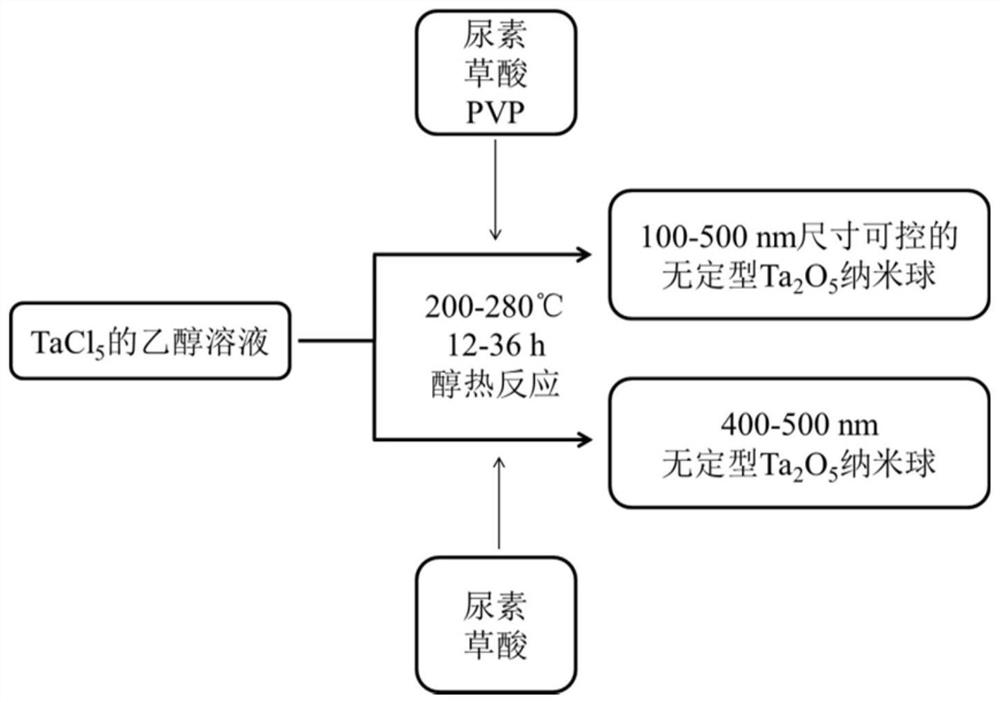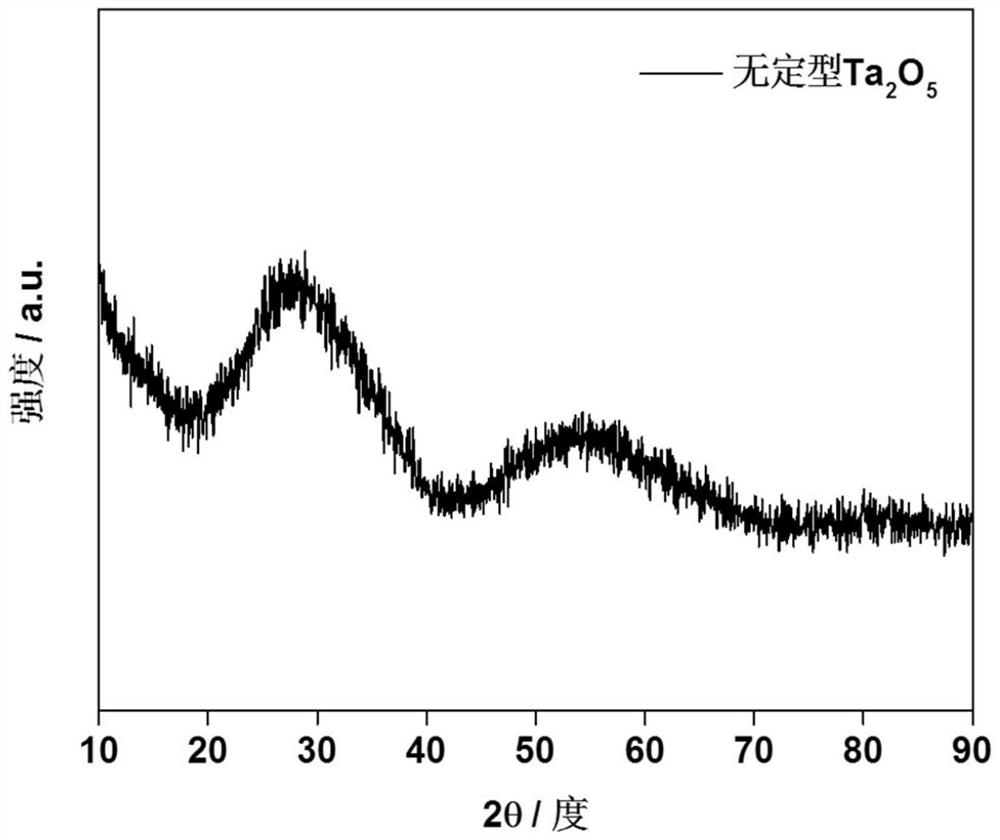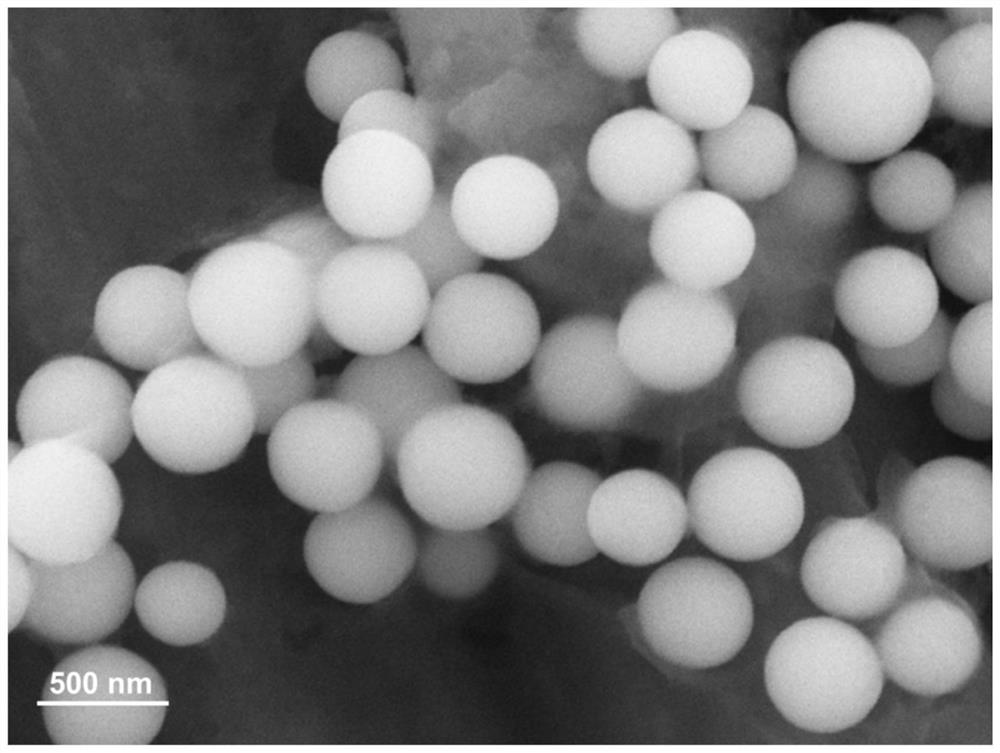Preparation method of size-controllable amorphous tantalum oxide nanospheres
An amorphous, tantalum oxide technology, applied in the field of nanomaterials, can solve the problems of incomplete sunlight energy and low photocatalytic efficiency, and achieve the effects of low production cost, excellent photocatalytic activity, and easy operation
- Summary
- Abstract
- Description
- Claims
- Application Information
AI Technical Summary
Problems solved by technology
Method used
Image
Examples
Embodiment 1
[0048] like figure 1 As shown, Example 1 proposes a 400-500 nm surface smooth amorphous Ta 2 O 5 The preparation method of nanospheres specifically includes the following steps:
[0049] 1. Weigh out 0.05 mmol of TaCl 5 The raw materials were dissolved in 15 mL of ethanol and mixed well.
[0050] 2. Add urea and oxalic acid to the ethanol solution of tantalum chloride, the substance ratio of tantalum chloride and urea is 1:10, and the substance ratio of tantalum chloride and oxalic acid is 1:5, and the solution is mixed with full stirring evenly.
[0051] 3. Transfer the mixed solution into a high-pressure reaction kettle for alcohol thermal reaction, the hydrothermal temperature is 240°C, and the hydrothermal time is 12h.
[0052] 4. Centrifuge the precipitate obtained by the alcohol thermal reaction at 4000 rpm for 8 min, and dry at 60° C. for 4 h. get amorphous Ta 2 O 5 Nanospheres.
[0053] figure 2 For the product XRD pattern prepared in Example 1, it can be se...
Embodiment 2
[0056] Add the surfactant PVP to the reactant to control the surface roughness of the amorphous tantalum oxide nanospheres, which specifically includes the following steps:
[0057] 1. Weigh out 0.05 mmol of TaCl 5 The raw materials were dissolved in 15 mL of ethanol and mixed well.
[0058] 2. Add urea, oxalic acid and PVP to the ethanol solution of tantalum chloride, the substance ratio of tantalum chloride to urea is 1:10, the substance ratio of tantalum chloride to oxalic acid is 1:5, and the ratio of tantalum chloride to oxalic acid is 1:5. The ratio of the substance to PVP is 1:1, and the solution is thoroughly mixed to make the solution evenly mixed.
[0059] 3. Transfer the mixed solution into a high-pressure reaction kettle for alcohol thermal reaction, the hydrothermal temperature is 240°C, and the hydrothermal time is 12h.
[0060] 4. Centrifuge the precipitate obtained by the alcohol thermal reaction at 4000 rpm for 8 min, and dry at 60° C. for 4 h. get amorphou...
Embodiment 3
[0063] Adjust the amount of PVP added, control the size of the amorphous tantalum oxide nanospheres, set the material ratio of tantalum chloride to PVP to 1:5, and fully stir to mix the solution evenly. Other conditions are the same as in Example 2. like Image 6 shown, the resulting amorphous Ta 2 O 5 Nanospheres are 300-400 nm in size.
PUM
| Property | Measurement | Unit |
|---|---|---|
| Specific surface area | aaaaa | aaaaa |
| Size | aaaaa | aaaaa |
| Size | aaaaa | aaaaa |
Abstract
Description
Claims
Application Information
 Login to View More
Login to View More - R&D Engineer
- R&D Manager
- IP Professional
- Industry Leading Data Capabilities
- Powerful AI technology
- Patent DNA Extraction
Browse by: Latest US Patents, China's latest patents, Technical Efficacy Thesaurus, Application Domain, Technology Topic, Popular Technical Reports.
© 2024 PatSnap. All rights reserved.Legal|Privacy policy|Modern Slavery Act Transparency Statement|Sitemap|About US| Contact US: help@patsnap.com










